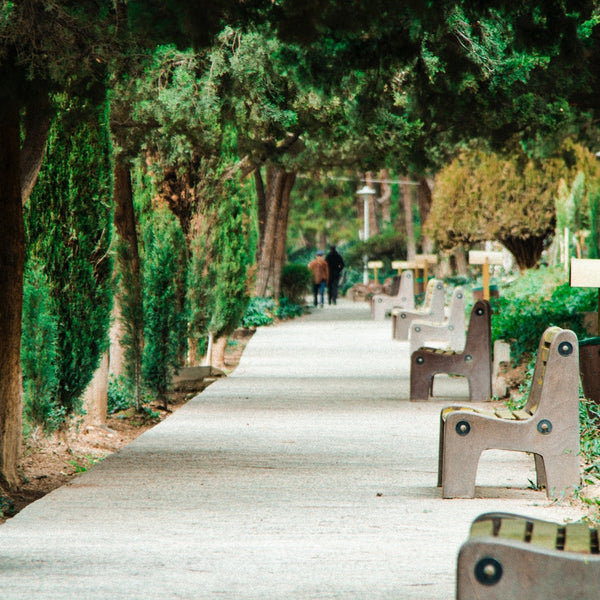The Fine Art of Slowing Down for Wellbeing & Productivity

“Our current relationship with the technologies of our hyper-connected world is unsustainable and leading us closer to the quiet desperation that Thoreau observed so many years ago. But as Thoreau reminds us, “The sun rose clear,” and we still have the ability to change this state of affairs.” – Cal Newport, author of Digital Minimalism
Losing track of time isn’t unusual, especially since doing multiple things is the norm. Watch a video. Click here. Like that. With so many sparkly options whirling by at any given moment, picking just one can seem impossible. Unfortunately, doing a little bit of this and that, means not giving a single task your full attention. And it has consequences. Maybe you lose track of the hours. Things don’t get finished. And when they do get done, you secretly feel they could’ve been better.
Just because you’re aware that distractions limit your potential, and enjoyment of life, doesn’t mean it’s easy to do things differently. After all, these habits took a lifetime to develop. Unraveling old patterns won’t happen in a flash. But it’s worth the effort…

Scrambling to get things done, creates an illusion that there’s never enough time. When you slow down, it creates an internal rhythmic shift… And ironically, instead of being lazy and not accomplishing, a whole lot more gets done, without the stress that comes from rushing.
As an act of self-love and empowerment, give yourself permission to change your pace. Try an experiment in slowness for a week. Notice the difference it makes in your life. Afterward, if you think it wasn’t worthwhile, go back to your old ways. But the hope is, you will be able to listen to your intuitive self, lessen stress, and get a lot more done in significantly less time. And if you do experience a profound change, you’ll have the opportunity to shift gears.
Start by closing out all the other browser windows except for this one and…
Take Stock of Your Digital Life

In his bestselling book, “Digital Minimalism,” Writer Cal Newport, believes that temporary hacks don’t hold long term solutions. He sees the issue of technology absorbing attention as rooted in something larger, and writes about how clicking and liking has caused us to become addicted, to not only immediate gratification, but also the carefully orchestrated underlying unpredictability that goes along with it. Newport doesn’t see an Internet-fast as the answer either. His approach to curtailing your technological distractions, is an insightful one that could have been created by the wisest Yogi… and it stems from self-understanding.
Newport recommends taking an honest look at yourself to truly evaluate your personal needs and wants. He doesn’t disregard the value gained from technology, as long as you use it, instead of allowing it to use you. So take a lesson from Newport, and decide which forms of the digital world best serve you. Then make a plan to spend a certain amount of time in those places and commit to ignoring all the rest. Yep. That’s right.
Eat Slow

Instead of chewing quickly, barely tasting your food, and rushing to dessert… develop the habit of slowing down at each meal. It’s better for your digestive system. Plus, it makes you feel fuller faster, and has been linked to weight loss. But more important, when the moment zooms by you lose it.
Before mindful eating was a catchy term, critically acclaimed, bestselling author, Alice Waters, owner and former chef of the groundbreaking restaurant, Chez Panisse, created the slow food movement. The antithesis of fast food, slow food is in favor of healthy eating, and emphasizes the importance of holistic foods. In the words of Ms. Waters, “To have a basic ingredient that can be prepared a million different ways is a beautiful thing.”
So… when it’s time to eat a meal, commit to doing so without distraction. No reading, texting, or technology of any kind. Bring all your focus to the food… Before you take that first bite, look at what’s on your plate, the colors, shapes… Think about what it took to bring this dish onto your table. Where were the vegetables grown? Who prepared them? Then, when you’re ready, take one bite at a time, as slow as possible. Taste each flavor, and engage your senses.
Enjoy The Pause

Similar to Yogic breathing, pausing is more complex than you might realize. And it’s not as easy as it sounds. When you pause… it forces you to stop… and then, afterward, readjust. Like the breath, that ordinary action has the ability to cause an internal shift. It lets distractions fall away and centers your attention. To enjoy the gifts of the pause, integrate it into your daily life.
Make pausing a habit... Upon waking, and throughout the day, before starting something new, just stop… Give yourself a break. And attune to one of your senses... Heighten your awareness... Take your time... Then, when you’re ready... go about your day. And know that any moment you feel unsure or scattered, you need only return to the pause for inner grounding.
Micro Meditation Breaks

Before you lose track of minutes that morph into hours, take back control by gaining clarity. There’s no excuse not to take a 3 minute meditation break; especially, since it will help you combat the stress response, become focused, and tame spiraling thoughts. Make the meditation your own. Set a timer for 3 minutes. Remove distractions. It can be done sitting or standing. Close eyes, or keep them open. Lengthen your torso and roll your shoulders back and down. Take a deep breath. Then very slowly exhale. Notice the thoughts as they pass without judgement. Let the sounds pass too… and don’t get caught up in them. Rest in this awareness... After 3 minutes, open your eyes. And as you continue the day, remember what 3 minutes feels like, and how long it truly is.
Embrace Uni-tasking

Multitasking is overrated. And it can become a real obstacle to mindfulness. It gets your thoughts spinning instead of allowing for singular focus. So practice devoting your attention to one action at a time with total concentration. When you feel the urge to shift your gaze, resist, and stay on track. Notice how each action feels when you dedicate yourself to one thing at a time, verses many.
Watch the Clock

Minutes aren’t butterflies. They don’t have wings… and they can’t fly… Get a handle on how expansive time truly is. To make the most out of your moments, set a timer for 5 minutes and give yourself a task. The catch is, you must be 100% engaged in whatever you’re doing. When you get thrown off course, don’t rush. Simply do nothing... Wait until you decide the next right move. Do all of this in 5 minutes. Remember, it’s up to you to set a comfortable pace for your actions. Once you reestablish your relationship with seconds and minutes, you give yourself something truly precious: more time.



